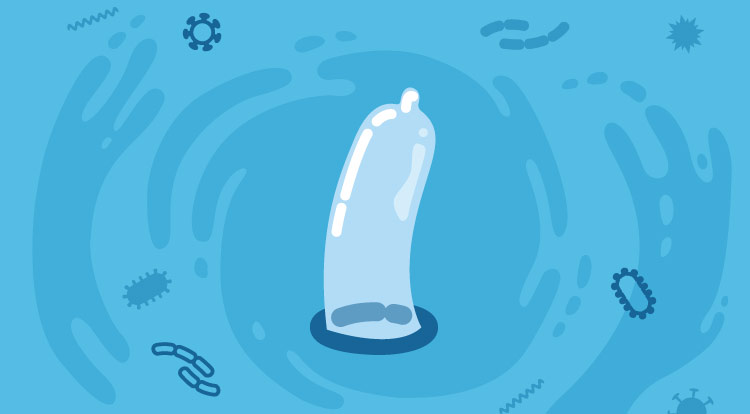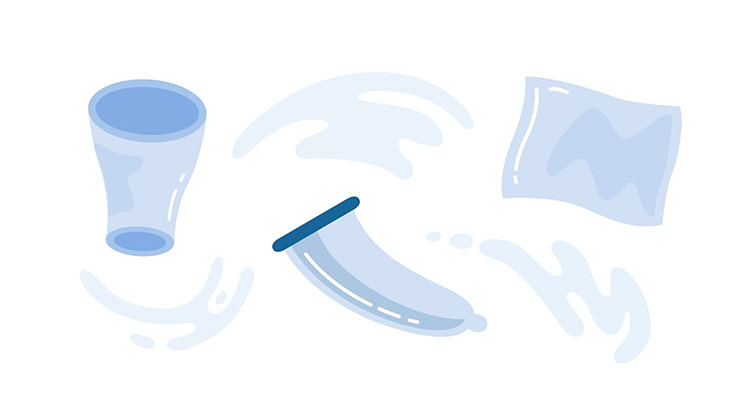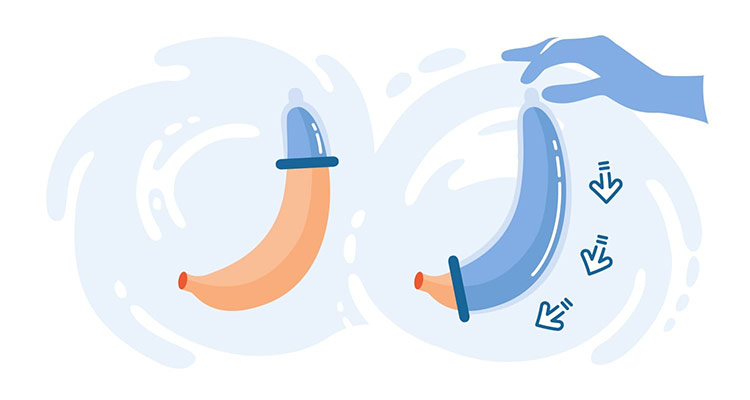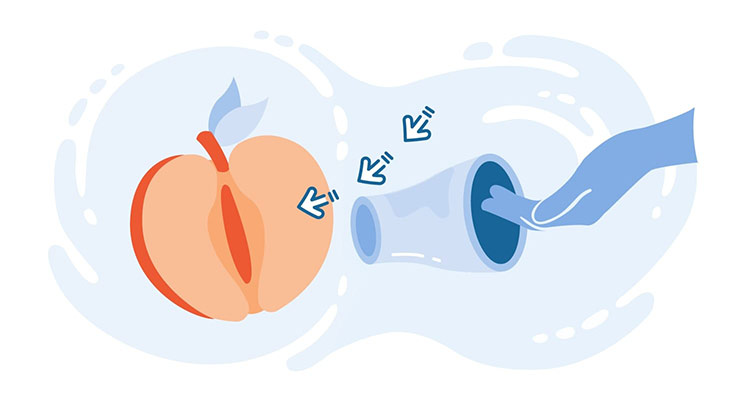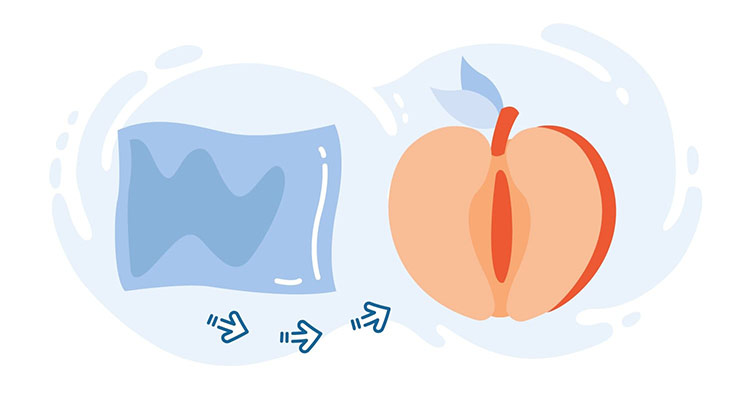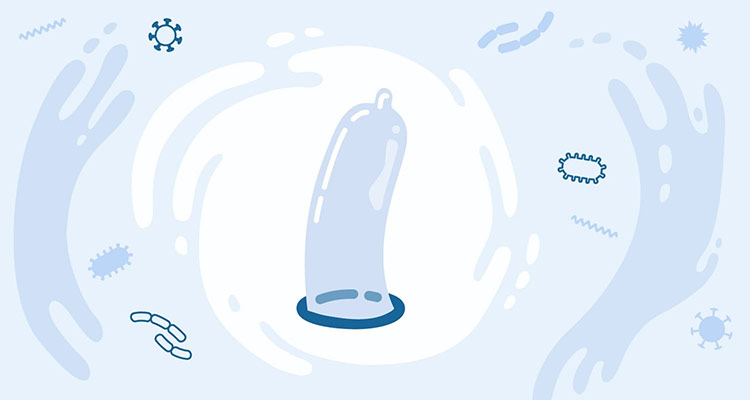Condoms are often one of the first types of protection we learn about in our youth. Some of us were taught about them during school sex ed classes when an awkward gym teacher instructed us on the best way to apply a condom to a piece of fruit. Some of us learned from our parents who walked into our bedrooms, handed us a book about sex and a pack of condoms while asking us to “please, oh, please do not get pregnant, or get anyone else pregnant.” The least fortunate of us may have simply learned about condoms through pop culture. We might have learned about their usage but less about how or why they’re important during sex.
However we were first introduced to them, condoms are often framed as an effective tool for family planning. What do we know about their effectiveness in preventing infections? Do condoms prevent STDs?
What is a Condom and How Does It Work?
Condoms are one of the oldest and most popular varieties of STD prevention in the world. They are made from a thin piece of material—usually latex, but sometimes polyurethane—which creates a barrier between partners, their genitals and other parts of their body that might be exposed to the genitals.
Using a barrier method, such as condoms or dental dams, can help protect partners from exposure to different bodily fluids they are not ready to exchange: whether that be pre-ejaculate, vaginal lubrication, semen or blood. All four of these fluids can contain and transmit sexually transmitted viruses, bacteria and parasites. It is important to practice safer sex and use a barrier method until you and your partner have been tested and you each feel comfortable sharing fluids.
Some couples will use condoms throughout the course of their relationship, regardless of relationship status, amount of time spent together and whether either show signs of STD symptoms. Safer sex and condom usage can be as much about personal boundaries and respect as they are about protection from pregnancy and sexually transmitted diseases. You should never feel pressured into abandoning safer sex practices by partners or societal pressures. If someone is pressuring you to not use condoms for any reason, this may be a warning sign about not respecting your personal boundaries. Do what feels comfortable and right for your body, first and foremost.
Types of Condoms
While the word condom has often become synonymous with the external condom (also known as the male condom), condoms aren’t for penises alone. The internal condom (also known as the female condom) is another type of condom that is equally effective at creating a barrier between partners. The internal condom is a type of condom that, instead of being slipped over the exterior of a penis like a sheath, is inserted into a vagina to create a protective barrier. If external condoms aren’t right for you and your partners, internal condoms should be considered as another great option for having safer sex.
Dental dams are another type of barrier device that are commonly associated with safer sex practices. These small sheets made from latex or polyurethane are commonly use during oral sex and applied as a barrier between the mouth and the vagina or anus. Dental dams can be purchased or they can also be crafted from external condoms for those with some creativity and a DIY spirit.
How Do I Use Condoms Effectively?
It’s important to use condoms safely and correctly to get the most effective barrier method. The answer to whether condoms prevent STDs will rely heavily on how they are used.
Here are some instructions on how to effectively use condoms for preventing either STDs or pregnancy.
The DOs and DON’Ts of Condom Usage:
- DO read the instructions on the package and check the expiration date.
- DO check the condom for tears or defects.
- DO use water-based personal lubricants to avoid slipping or tearing.
- DO use a condom every time you have sex.
- DO use the condom the entire time you have sex from beginning to end. Removing the condom at any point during sex can render its usage ineffective.
- DO use latex or polyurethane condoms to prevent STDs. While lambskin condoms do offer some protection against pregnancy, they are too porous to be an effective barrier for preventing STDs.
- DO store condoms in a cool, dry place.
- DON’T use an external and internal condom together or more than one external or internal condom. Only use one at a time.
- DON’T reuse condoms. Condoms are single-use. If a condom needs to be removed at any point, you should dispose of it and apply a new condom.
- DON’T flush condoms down the toilet. This can cause plumbing issues that you, your parents or your landlord may not be pleased about.
- DON’T use oil-based personal lubricants with latex condoms. These can weaken the latex of the condom and cause it to break. If you’re using an oil-based personal lubricant, make sure to only use polyurethane condoms, as this material won’t break down when exposed to oil like latex condoms will. To make sure you’re protected no matter what kind of condom you use, stick to water- or silicone-based lubricants.
How to Use an External Condom
- Carefully open the packaging and remove the condom from the wrapper.
- Place the condom over the tip of the erect penis. If the penis is uncircumcised, pull back the foreskin first.
- Pinch the tip, or reservoir, of the condom to remove any air that may be trapped inside.
- Unroll the condom down the shaft of the penis.
- After sex, hold the base of the condom before you begin to pull out. This will help prevent the condom from slipping and fluids from escaping.
- Remove the condom carefully and dispose of it in a trash can.
How to Use an Internal Condom
- Carefully open the packaging and remove the condom from the wrapper.
- The closed, inner ring is for placing in the vagina and holds the condom in place. The thinner, outer ring will remain outside of the body and covers the vaginal opening.
- Holding the closed end of the condom, squeeze the sides of the inner ring together with your thumb and forefinger and insert it into the vagina, similar to inserting a tampon.
- Use your fingers to push the condom into your vagina as far as it will go until it is resting comfortably against your cervix. The condom will expand but you may not feel it.
- Check the condom and make sure it is not twisted, with the outer ring still outside of the body and against the vulva.
- If your partner has a penis, guide the penis into your vagina through the opening of the internal condom. If you feel the condom slip and the outer ring of the condom begins to be pushed into your vagina, stop having sex immediately.
- To remove the condom, gently twist the outer ring to seal the contents of the condom and pull the internal condom out of your vagina before getting up. Dispose of the condom in the nearest trash can.
How to Use a Dental Dam
- Carefully remove dental dam from packaging, as to avoid tears.
- Place the dental dam over the vulva or anus and hold it in place.
- When finished, dispose of the dental dam in the trash.
Do Condoms Prevent STDs?
So far, we’ve covered a lot in this article, from what condoms are to what they do and how they can be used effectively. That leaves us with the final question: Do condoms prevent STDs?
The bottom line: Yes.
Condoms are a highly effective tool for preventing STDs/STIs and pregnancy, so long as they are used consistently and correctly. The Centers for Disease Control and Prevention (CDC)has ruled condoms an effective tool for preventing STDs, as well as other diseases such as Zika and Ebola which can be transmitted via sex.
If you have concerns about how a condom was used during sex or if you or your partner(s) begin to display STD symptoms, it is important to get tested as soon as possible. The sooner you are diagnosed with an STD, the sooner you will be able to find treatment.
Remember these important facts: Many of the most common STDs are highly treatable, there is no reason to be embarrassed about getting tested and work with a doctor to find the right treatment plan for you. Protect your health.

